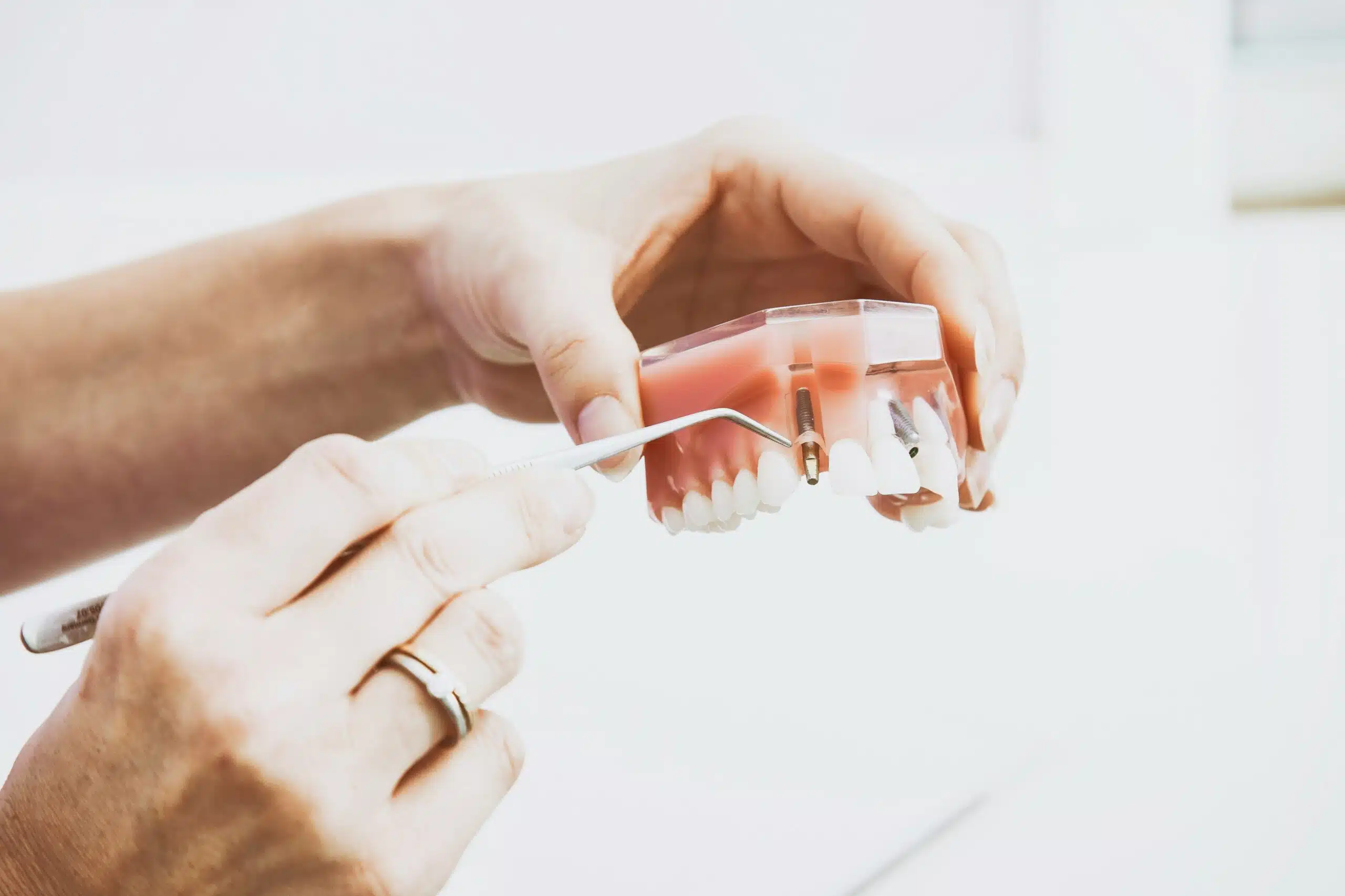Deciding to undergo dental implant treatment is a significant step towards not just restoring a smile but enhancing overall oral health and quality of life. Once you decide to do it, it just can’t happen fast enough. Most people want the new teeth quickly, but I tell them that we have to be patient. A pregnancy takes nine months and you couldn’t rush it even if you wanted to. When it comes to dental implants, the body takes time to heal – an implant will take anywhere from three to six months from the beginning to completion. If we violate the natural healing process, we can get bitterly disappointed. It pays to be meticulous and patient when it comes to dental implants.
In this article, I will help you understand the steps and the timeframe for conventional dental implants. Delving into the details of this journey will equip you with the knowledge needed to make informed decisions and ensure a successful and enduring outcome.
1. Initial Consultation: The Foundation for Your Smile Transformation

The dental implant journey begins with a comprehensive initial consultation, During this pivotal phase, we will discuss your desires and concerns. The dentist will conduct a thorough assessment of your oral health, assess your medical history, and evaluate your candidacy for dental implants. X-rays and impressions might be taken at this stage, to get an insight into your oral anatomy. The dentist will then discuss the process and expectations to equip you with adequate information to make a decision. It pays to ask the questions you might have during this initial appointment. This is also an opportunity for you to see how comfortable you feel with the dentist. Implant treatment can be a long journey, so you would not only consider the cost but also ensure that you feel like you can comfortably work with the chosen dentist.
Book your Initial Consultation here
2. 3-D scan (CBCT)
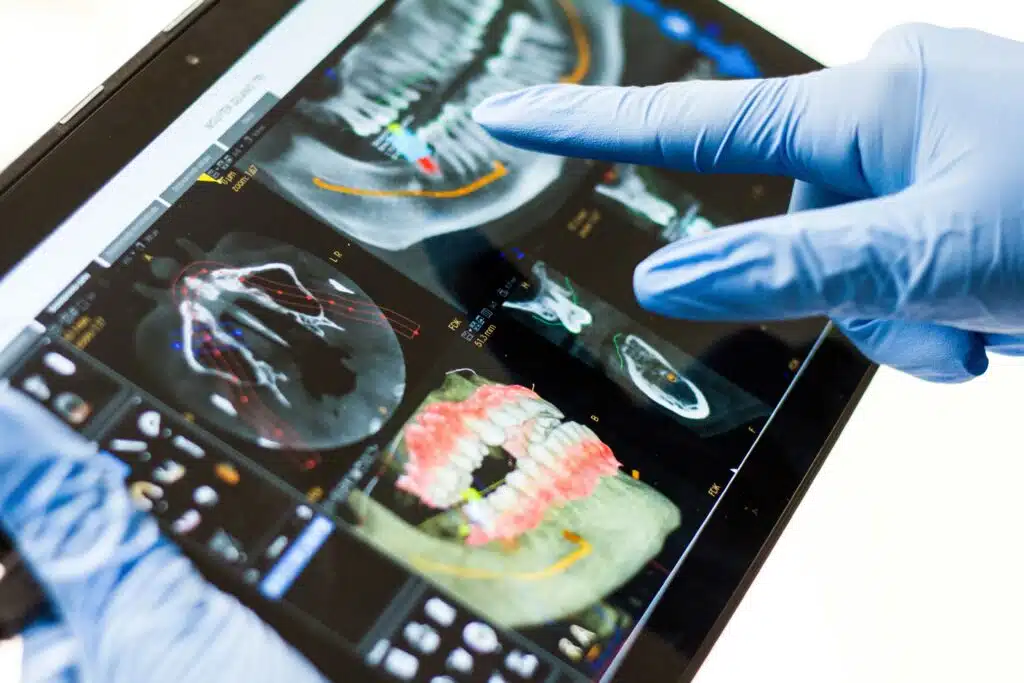
CBCT offers three-dimensional, high-resolution images, allowing dentists to visualise the patient’s bone structure, nerves, and surrounding tissues with exceptional detail. Bone density, width, and height as well as the gum thickness are measured from this scan. From these measurements, the dentist will determine the size and the brand of the implant that’s best for you. This imaging technology aids in the precise assessment of implant placement sites, ensuring optimal positioning for long-term success. CBCT’s ability to capture a comprehensive view of the oral structures enables dentists to identify potential challenges, such as anatomical variations or bone deficiencies, before the surgical phase. Whilst an important tool, it cannot be used alone to make an assessment – it is important to combine this information with the intraoral evaluation of the teeth, gums, your ability to open your mouth for the surgery, and your general health. That’s why a treatment plan cannot be derived from a scan alone.
3. Treatment planning
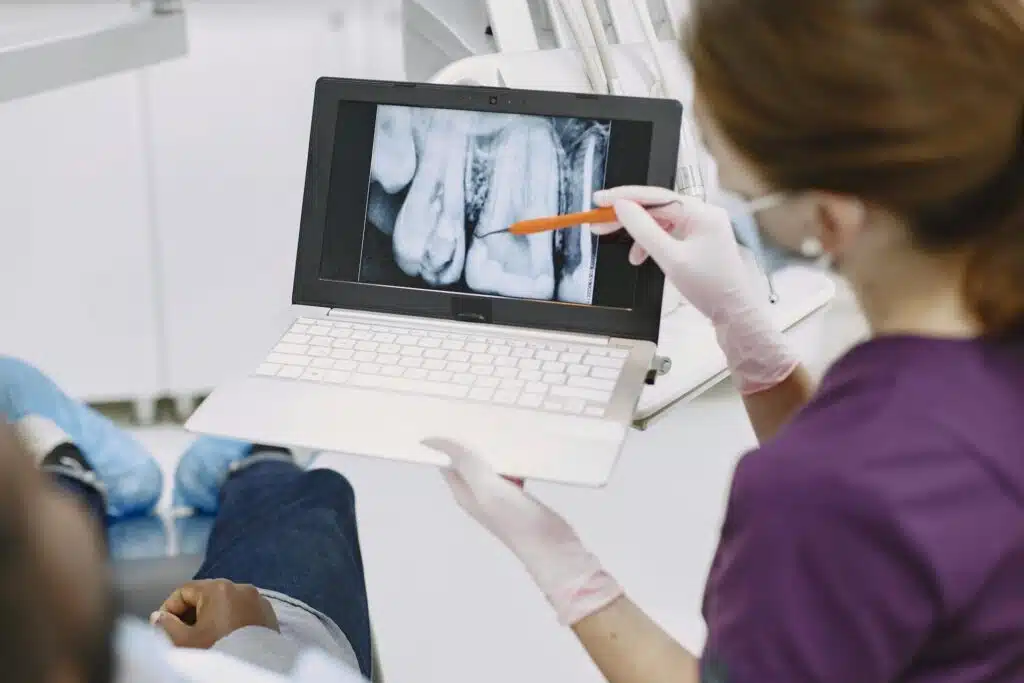
Following the initial collection of information, a treatment plan is crafted in collaboration with you. This stage involves a detailed discussion of factors such as the number of implants required, the type of restoration (crown, bridge, or denture), fees involved, and an overall timeline. The patient’s input is integral – a dentist will want to understand your aspirations so that he/she can achieve an ideal outcome for you. They will also need to marry your expectations with what is realistically possible. A deep understanding of the proposed course of action for both you and the dentist will result in a successful outcome. Implant Placement: Precision and Expertise in Action
4. Implant Surgery
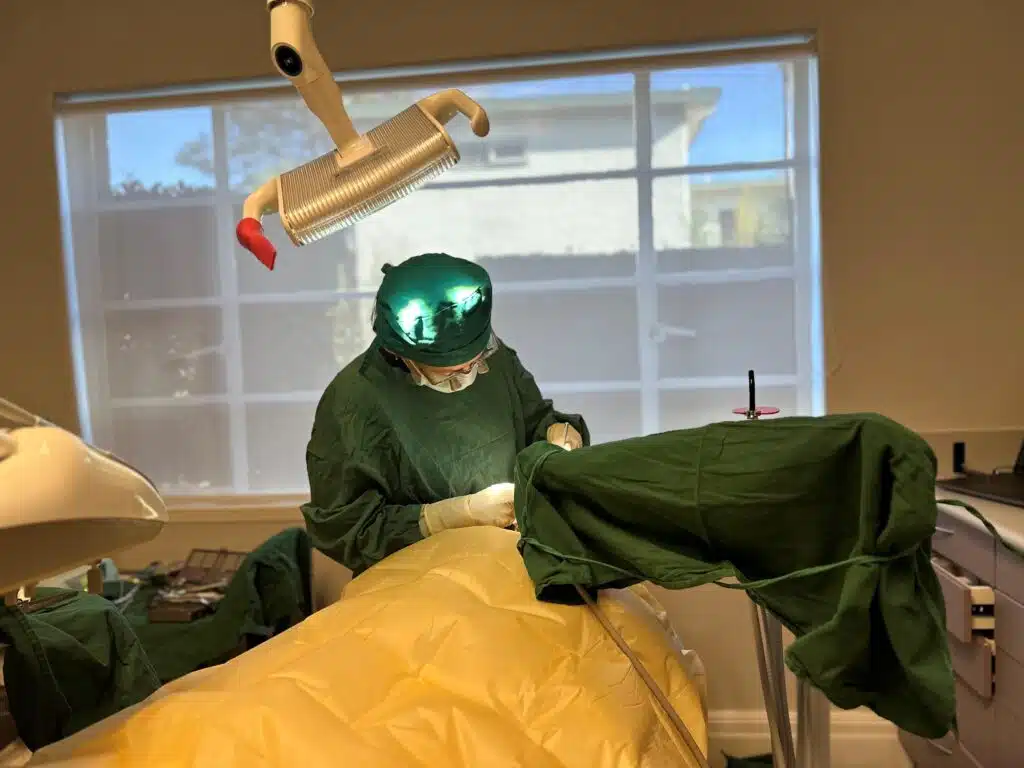
All the planning that precedes the surgery is time-consuming but crucial. Now comes the actual surgery. This procedure usually takes place in the dental chair. To ensure your comfort it can be done under local or general anaesthesia. Typically completed within 60 to 90 minutes, this mostly painless procedure is followed by detailed post-operative care discussions and guidelines.
5. Recovery
The recovery phase following dental implant surgery is a crucial period that greatly influences success. To keep you comfortable and out of pain, a combination of medications and oral care practices are prescribed. Dexamethasone, a potent anti-inflammatory steroid, is administered to minimise swelling and discomfort. This, coupled with a course of antibiotics, helps prevent infection, safeguarding the newly placed implant. Over-the-counter pain relievers like Nurofen may also be recommended to manage postoperative pain effectively. Additionally, maintaining oral hygiene is paramount, and because it’s uncomfortable and not advisable to brush the fresh surgical site, the use of chlorhexidine mouth rinse serves as a valuable adjunct. This antimicrobial solution aids in reducing the risk of infection and promotes a clean oral environment, contributing to optimal healing.
Clear postoperative care instructions will be provided by the dental team, emphasising the importance of adherence to prescribed medications and oral hygiene practices. Patients are typically advised to continue using chlorhexidine mouth rinse for two weeks post-surgery until the stitches are removed. While discomfort and mild swelling are normal during the initial days, any unusual symptoms or severe pain should be promptly communicated to the surgeon. This open line of communication ensures that any potential complications are addressed promptly, promoting a smooth and complication-free recovery. Regular follow-up appointments with the oral surgeon enable them to monitor the healing progress, address concerns, and make any necessary adjustments to the treatment plan.
6. Osseointegration: Fusion of Implant and Bone
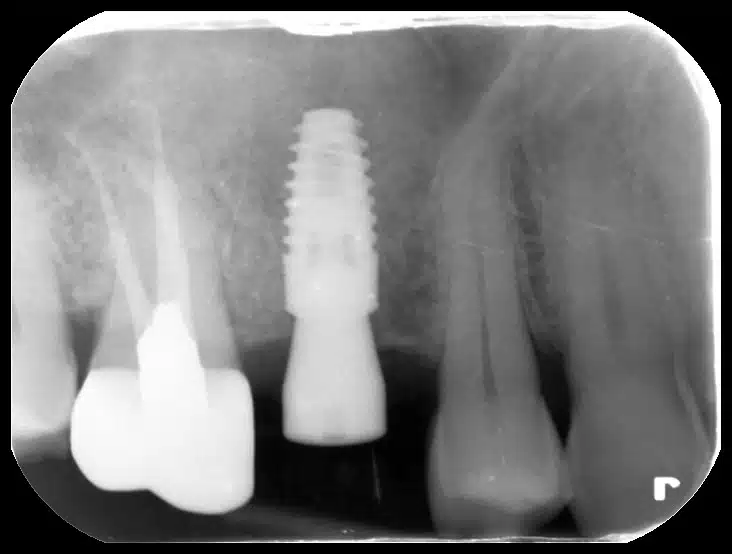
After implant placement, the healing process known as osseointegration takes centre stage. This phenomenon involves the gradual fusion of the jawbone with the implanted titanium. This phase, typically spanning three to five months, is critical for the long-term stability and success of the dental implant. Regular follow-up appointments allow the dentist to monitor the progress of osseointegration, ensuring it proceeds as planned. I recommend that you attend monthly review appointments during this phase to ensure uneventful healing. This way, if a problem is detected, it can be promptly dealt with.
7. Making of the Crown: Connecting Implant and Restoration
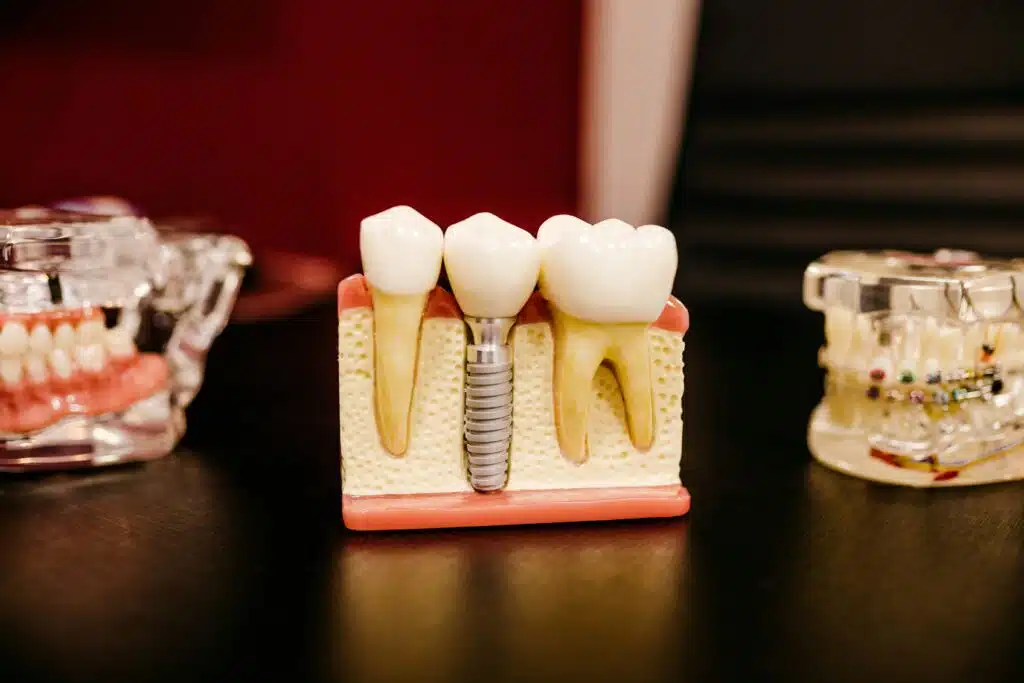
With the osseointegration process completed, three to five months later, now comes the exciting part – the making of the crown. Your dentist will either take an impression or a more modern 3-D digital scan of the implant and record the shade of your natural teeth. These measurements are sent to a dental technician who works closely with the dentist on your new custom-made crown. You should expect the result to be seamlessly integrated into your natural dentition, both functionally and aesthetically. However, there might be some minor differences between natural teeth and an implant crown. An implant crown is often made to look smaller than the adjacent natural teeth – a smaller surface area is protective of the implant as it minimizes the biting forces delivered to the implant. You might also find that the way the implant emerges from the gum is a little different from a natural tooth – this is perfectly normal and not a reason for concern. Finally, the bite will be adjusted to ensure the new crown is comfortable to eat with and does not interfere with the natural bite.
8. Maintenance and Checkup
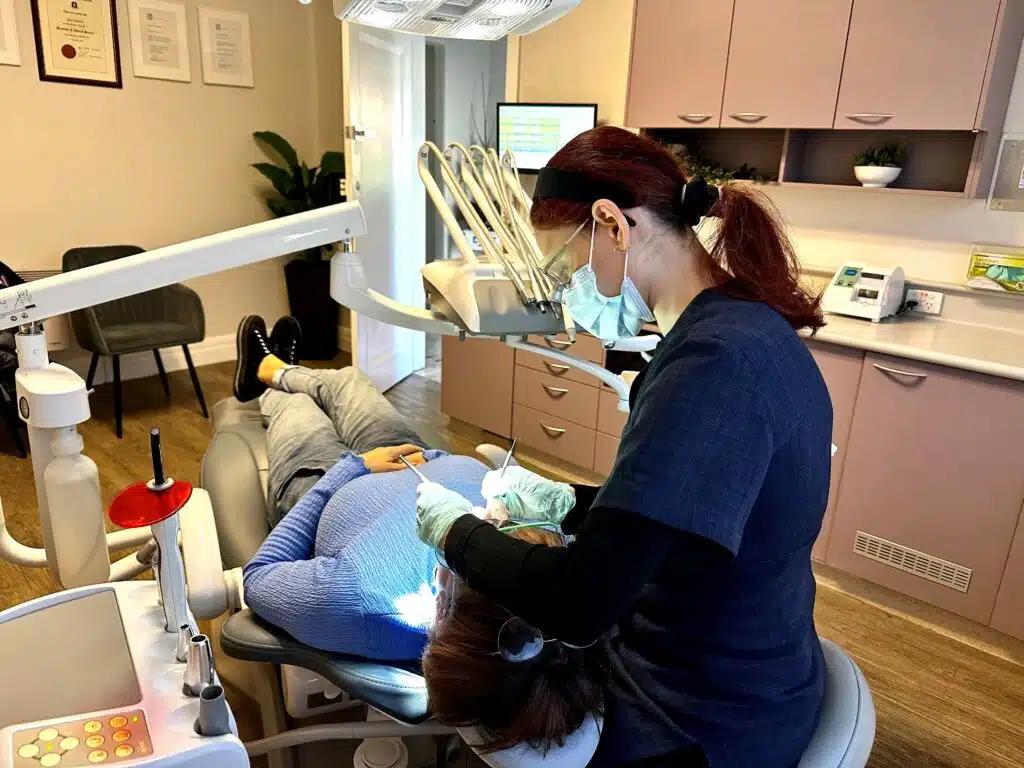
This part is in your hands. Your dentist or hygienist will provide you with post-restoration care instructions, ensuring that you can look after your implant. A lot of time, work, and resources have gone into your new implant by this stage, so it’s prudent to look after your investment. This is simple! It’s a commitment of six seconds a day to floss each implant. It’s not a big task, but I can’t stress how important it is to keep harmful plaque off it. If you do it, there is a high likelihood that the implant will last you a long time, and if you don’t, the risk of peri-implantitis (gum infection around implants) increases. Your dentist will also recommend checking your implant every 6-12 months – listen to their advice – during these regular check-ups, we assess the implant and take measurements to assess its health. If any problems are detected, they can be treated promptly.
Conclusion
Dental implant treatment is a holistic journey that requires collaboration between the patient and the dental team. From the initial consultation to the final restoration, each step plays a vital role in ensuring the success and longevity of dental implants. By understanding the comprehensive process, and not rushing it, you can expect a good outcome and longevity from your implants.
Schedule your initial consultation today and take the first step towards a confident smile with dental implants!

